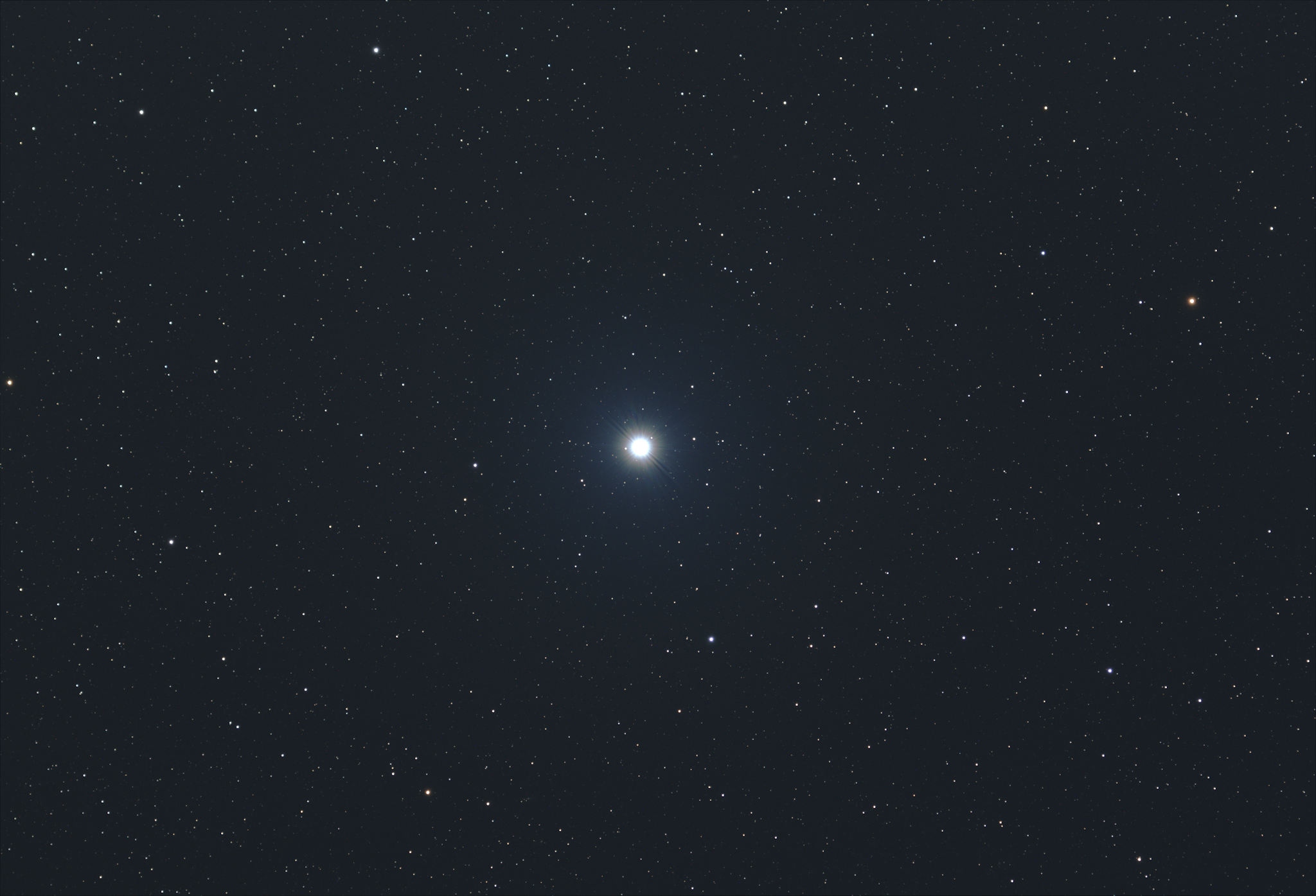Vega: α Lyr
Vega is a bright star in the night sky that is only 25 light years from Earth. You can spot it in the summer by looking nearly straight up (slightly east before midnight), it will be the brightest star. Joined by stars Deneb and Altair, Vega is part of a 3-star asterism known as the Summer Triangle, which is a very large right angle triangle which Vega is the point at the 90 degree angle. The other two stars are lower in the eastern sky.
Vega is only 450 million years old! I suppose to put this into perspective, our Sun is 4.5 billion years old (10 times the age of Vega). Interestingly enough, Vega’s lifespan will also be one tenth the lifespan of the Sun. It is about 2x the mass of the Sun as well.
Apparent Brightness
Vega is very bright, with an apparent magnitude of 0.03. The Apparent Magnitude scale is a logarithmic measure of brightness as seen from Earth. This scale is dependent on the object’s intrinsic brightness, distance from Earth as well as extinction of light when passing through interstellar dust on its way to Earth. Vega is so close to 0 on this scale because when the scale was invented, the brightness of stars in the sky were all being recorded as relative to Vega’s brightness. Values greater than ‘0’ appear dimmer while less than ‘0’ appear brighter. Vega is no longer the base for this measurement, since it was learned Vega is a variable star (cyclic fluctuations in brightness) so that’s why it is 0.03 instead of 0.0.
First Astrophotos
Apparently, astrophotography begin in 1840 when John William Draper took images of the Moon. Other than the Sun, Vega was the first star to be photographed by William Bond and James Whipple at the Harvard College Observatory. Draper also used Vega as the first star to record its spectrum in the 1870s. Since the 1940s, Vega's stellar spectrum has been used as a base in which to classify other stars.
Vega is the first star I learned in the sky about a year ago, so I thought why not learn a little about it.

Comments
Post a Comment